Does your geranium’s beautiful green leaves suddenly seem a bit off? You may be dealing with yellowing of the leaves, otherwise known as chlorosis. The symptom can be caused by several different factors from lack of nutrition to environmental conditions. With some help and advice you can get your geranium back in perfect shape so it can continue to bring beauty into your space! In this blog we will take an in-depth look at what causes geraniums to turn yellow, how you can diagnose the underlying issue correctly, and what steps you need to take to revive those vibrant green shades again.
What Causes Geraniums to Turn Yellow?
Lack of Nutrition
The most common cause of yellowing leaves in geraniums is a lack of nutrition. Geraniums need adequate amounts of nitrogen, phosphorus, and potassium in order to flourish.
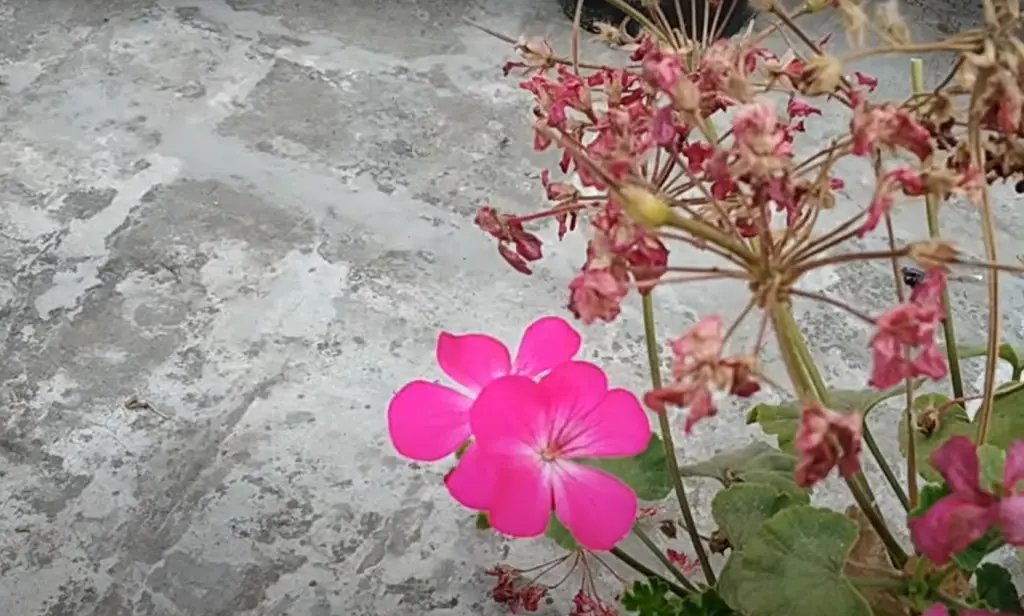
If these important macronutrients are not present or become depleted quickly due to heavy leaf growth or frequent waterings, the leaves will start to turn yellow.
Too Much Water or Not Enough Water
Another reason for yellowing leaves in geraniums is too much or not enough water. If the soil becomes saturated with too much water, the roots can’t absorb oxygen from the air and eventually start to drown. The result of this will be yellow leaves falling off. If the plants do not receive enough water, they may become dehydrated and experience nutrient deficiencies, which can also lead to yellowing of the leaves. [1]
Environmental Conditions
Geraniums prefer to be in warm, sunny locations with plenty of air circulation. If the plants are placed in areas that are too shady or exposed to strong winds, their leaves can start turning yellow due to stress from the environment. In addition, if temperatures drop below 55°F (13°C) for prolonged periods of time, this can also cause the leaves to turn yellow.
Pest Infestation
Finally, if your geraniums have been infested with pests such as aphids or spider mites, the leaves can turn yellow due to their feeding activity. These pests will suck out the nutrients that are needed for healthy foliage growth and development.
Diagnosing the Issue with Your Geranium’s Leaves
Visual Inspection
Inspect the leaves of your geranium for signs of yellowing. If there are yellow patches, look closely to see if they’re surrounded by a darker green or black discoloration. This could be evidence of fungal disease like Botrytis blight or powdery mildew. Additionally, check for signs of insects, such as small holes in the leaves. These are indicative of an infestation and should be treated with an insecticidal soap or neem oil solution.
Soil Testing and Nutrient Analysis
The health of your geranium’s leaves can also be affected by soil nutrient deficiencies. Test the pH of your soil and consider having a full nutrient analysis performed.
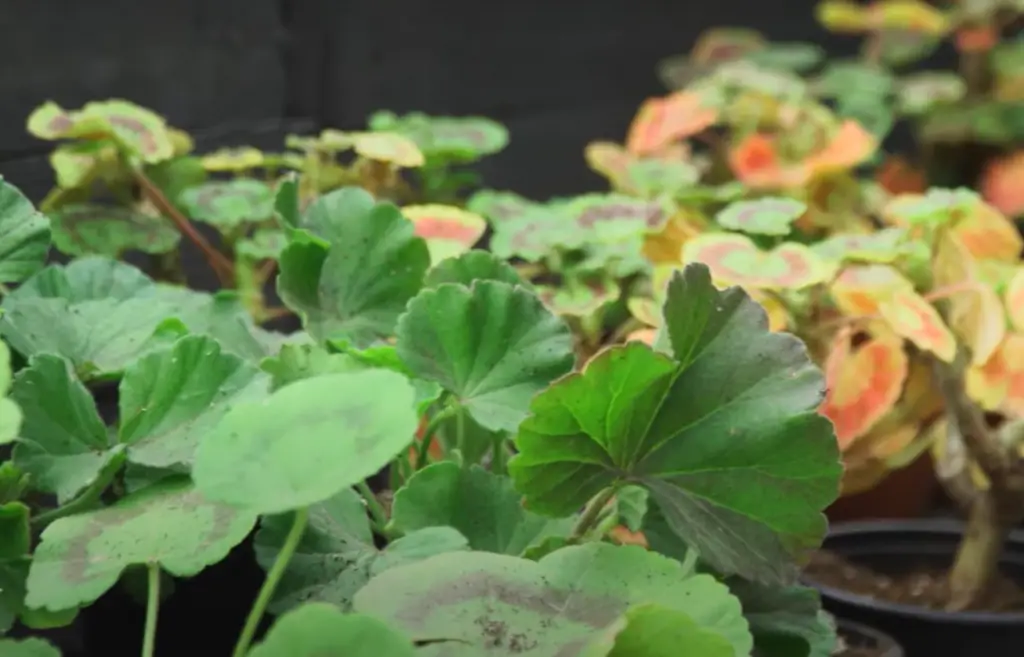
If the results show that your soil has inadequate levels of certain nutrients, such as iron, you may need to apply fertilizer to address this issue.
Water Quality Analysis
Poor water quality is another potential cause for yellowing leaves on geraniums. Have the hardness and alkalinity of your water supply checked, as hard or alkaline water can lead to nutritional deficiencies in plants. Adjustments may need to be made if these values are out of range for supporting healthy plant growth. If none of the above steps reveals any clues about why your geranium’s leaves are turning yellow, consult with an experienced horticulturist for further diagnosis and assistance.
Reviving Your Geraniums Vibrant Green Shade Again
Add Nutrients Back Into The Soil If Necessary
When geranium leaves turn yellow, it’s likely a sign of nutrient deficiency. To revive their vibrant green color again, you’ll need to add back the missing nutrients into the soil. The most common deficiencies for geraniums are nitrogen and potassium. You can supplement these in the form of both organic and chemical fertilizers.[2]
Adjusting Light And Water Requirements For Optimal Environment
Light and water requirements can also determine a geranium’s health. If your yellowing geranium is not getting enough light, it may be best to move it to an area with more direct sunlight. This will help the plant thrive and maintain its vibrant green color. On the other hand, if your geranium is receiving too much sun, you can shade it using a lightweight cloth or paper overhang. Additionally, you should ensure that you are providing consistent irrigation without overwatering. With the right balance of nutrients, light, and water, your geraniums should return to their vibrant green shade in no time!
Identifying And Treating Pests If Found
Lastly, you should also check if there are any pests or diseases that have caused the yellowing of your geraniums. If pests are found, treating them with an approved insecticide is recommended. This will help prevent further damage to your plants and help them maintain their vibrant green shade once again.
By following these steps, you can successfully revive a geranium’s vibrant green color and enjoy their beauty for many more seasons!
How Often Should I Water Geraniums?
Geraniums are relatively drought tolerant, but they still like to stay evenly moist. Water your geraniums when the top of the soil is dry to the touch, usually once or twice a week.
If you’re unsure whether your geraniums need water, stick your finger into the soil—if it feels dry two knuckles deep, it’s time for a drink. Additionally, be sure to thoroughly water each time you do so; light sprinkles won’t be enough for established plants. To maximize water absorption and avoid runoff, make sure your containers have drainage holes in their bottoms and that they’re sitting in trays or on a saucer to collect excess water.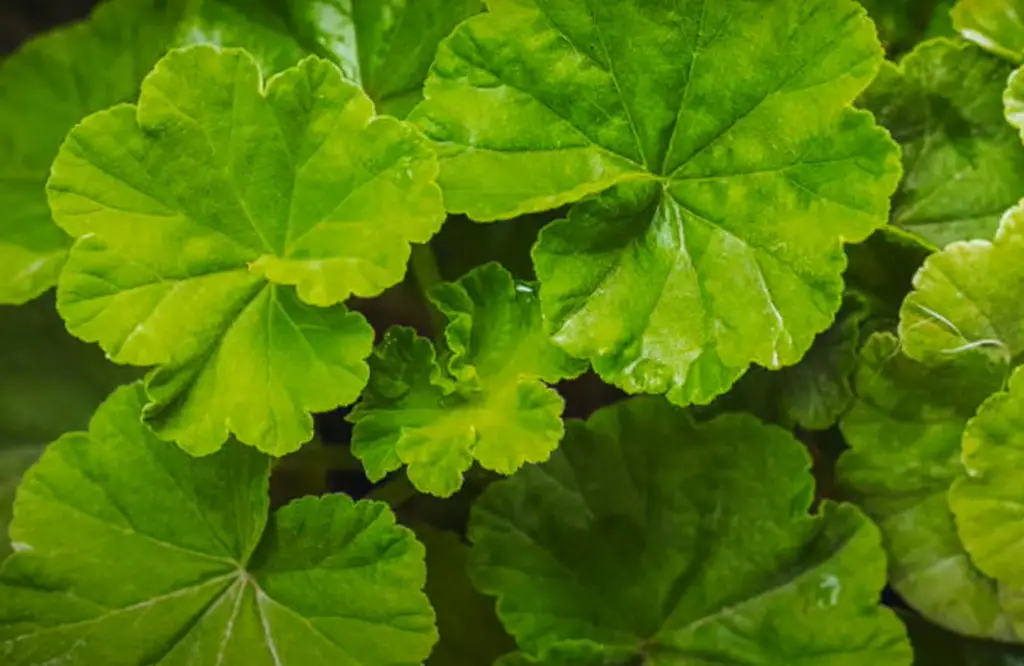
Another factor to consider when watering geraniums is the season. During their active growth period—spring and summer—geraniums will need more frequent watering than during winter, when their growth slows down. If you’re growing your geraniums indoors, keep an eye out for signs of dryness in the soil year-round and water as needed. When outdoor temperatures are above 85 degrees Fahrenheit (about 29 Celsius), give your plants an extra drink every week. Be sure to reduce irrigation if there’s heavy rainfall; too much moisture can also cause yellowing leaves.
Finally, adjust how often you water based on the specific potting mix. Some mixes drain faster than others, and some hold more moisture. Always check the soil before you water your geraniums to get a better idea of how often you need to do it. Keeping an eye out for yellowing leaves is also important—if leaf discoloration persists, try watering your plants less frequently or adding organic matter like compost or peat moss to help improve drainage. With the right care, your geraniums will be vibrant and healthy all season long![3]
Can Geraniums Grow In A Hot Sun?
Geraniums love the sun, but they don’t do well in extreme heat. When exposed to intense summer temperatures, geraniums can suffer from leaf scorch or root damage. If you want to grow geraniums in a hot sun, be sure to provide plenty of shade and water often. Choose an area that receives some morning or late afternoon shade and keep the soil moist at all times. It is also important to use mulch around your plants to help retain moisture and keep their roots cool. With these precautions, you can successfully grow healthy geraniums under hot sunshine conditions.
How Long Do Potted Geraniums Last?
Geraniums are an incredibly hardy flower and can last for many years when properly cared for. If you have a potted geranium, you may find that it will live up to three or four years if taken proper care of, such as keeping the soil moist but not soggy, making sure it gets enough sunlight and providing adequate drainage. However, with older plants or those that have had difficult growing conditions, the life expectancy can be shorter. In general, though, potted geraniums tend to have longer lifespans than deciduous varieties.
Do Geraniums Like Coffee Water?
No, geraniums do not like coffee water. In fact, it’s best to avoid using coffee water on your geranium plants.
Additionally, if you’re trying to fix the yellowing of your geranium leaves with coffee water, it won’t help. The best way to keep your geranium healthy is to give it well-draining soil and plenty of sunshine throughout the day. Additionally, make sure you are watering the plant regularly but not over-watering as that could also cause yellowing of the leaves. If you feel like you need to fertilize your plant occasionally, opt for an organic fertilizer that won’t be too strong for the plant. With these tips in mind, you can help keep your geraniums healthy and their leaves a beautiful green color! [4]How Do You Keep Geraniums Healthy?
Geraniums can be a great addition to any garden, but need proper care in order to stay healthy and vibrant.

To ensure that your geraniums remain healthy, make sure that you are following these steps:
- Watering: Give your geraniums about an inch of water every week, making sure not to overwater or let them dry out completely.
- Sunlight: Geraniums enjoy plenty of sunlight – they prefer being in full sun for most of the day so make sure to place them in an area with ample sunlight if possible.
- Nutrients: Feed your geraniums fertilizer every one to two weeks during their growing season and cut back during the winter.
- Pruning: Prune your geraniums on a regular basis to encourage more growth and keep them looking their best.
By following these simple steps, you can help ensure that your geraniums stay healthy, vibrant, and beautiful all year round!
What Time Of Day Should You Water Geraniums?
When watering geraniums, it’s important to consider the time of day you are doing so. Ideally, water your geraniums in the early morning or late afternoon. This helps the soil absorb and retain more water and prevents it from being evaporated by the intense heat of mid-day sun. Additionally, watering during these times minimizes fungal diseases that can develop if leaves are left wet overnight. Be sure to check for moisture before each watering as overwatering can lead to yellow leaves as well. When needed, provide enough water so that it reaches a depth of 6 inches into the soil around the base of your plant.
Do Geraniums Like Eggshells?
It may be tempting to add eggshells to your geranium potting soil for a boost of calcium, but this isn’t necessarily the best way to provide essential nutrients for your geraniums. Eggshells contain high amounts of insoluble calcium carbonate, which can make the soil too alkaline and inhibit root growth. Additionally, eggshells take a long time to break down in soil, meaning they won’t be readily available to the plant. Instead of adding eggshells, use a fertilizer specifically formulated for geranium plants that contains soluble forms of essential nutrients like nitrogen, phosphorus, and potassium. This will ensure that your geranium is getting the right balance of nutrients it needs without risking damage from an overly alkaline environment. If you choose to use eggshells, be sure to grind them up into tiny pieces so that they dissolve more quickly in the soil.
It may also help to add organic matter like compost or well-rotted manure to your potting mix when planting geraniums.
Be sure not to use fresh manure as this can burn roots due to its high nitrogen content. Also, make sure the manure is completely decomposed before adding it to the soil; otherwise, it will take too long for the nutrients to be available for your geraniums. [5]What Is The Best Fertilizer For Geraniums?
If you notice your geraniums’ leaves turning yellow, one of the best things you can do is to fertilize them. Fertilizer helps replenish the vitamins and minerals that geraniums need to remain healthy and vibrant.

The best type of fertilizer for geraniums is a balanced 20-20-20 fertilizer, as this contains equal amounts of nitrogen, phosphorus and potassium. This combination helps nourish geraniums while helping them maintain their color. Furthermore, you should avoid fertilizers with high levels of nitrogen – such as 46-0-0 or 33-0-0 – because these will cause the foliage to turn yellow due to an excess of nitrogen in the soil. In addition, you should also avoid slow-release fertilizers as they can cause the soil to become deficient in nutrients.
When applying fertilizer, make sure to mix it into the soil at the base of each plant and then water thoroughly. You should apply the fertilizer every four weeks throughout the growing season and reduce applications during cooler months. Also remember not to over fertilize – less is more! If your plants are still showing signs of yellowing after fertilizing, you may want to consult a professional for further advice.
FAQ
Why are my geranium cutting leaves turning yellow?
Geranium cutting leaves can turn yellow for a variety of reasons. Common causes include nutrient deficiencies, overwatering or underwatering, and pest infestations. It is important to determine the root cause of the yellowing before attempting any treatments.
How can I tell what’s causing my geranium leaves to turn yellow?
Inspect your plant closely for signs of nutrient deficiency (yellow/brown spots on the leaves), overwatering (wilting), underwatering (dry soil), and pest infestation (small holes in the leaves). If you suspect any one of these issues, take appropriate steps to address it. Additionally, perform a soil test to identify any nutritional imbalances that may be present in your soil.
What should I do to prevent my geranium leaves from turning yellow?
To help ensure that your geranium cutting remains healthy, ensure that it receives adequate sunlight, water, and nutrients. Make sure to fertilize your plants regularly with a balanced fertilizer and adjust watering accordingly (i.e., don’t overwater or underwater). Additionally, inspect your plant frequently for signs of pest infestation and take the appropriate steps to address any issues quickly.
What should I do if my geranium leaves are already turning yellow?
If you have identified the cause of the yellowing (e.g., nutrient deficiency, overwatering/underwatering), adjust your care regimen according to the issue at hand. If you are having trouble diagnosing the cause of the yellowing, consider consulting with a horticulturist for more detailed advice. In some cases, it may be necessary to remove and replace affected leaves.
Is there anything else I should do to keep my geranium cutting healthy?
To ensure that your geranium cutting remains healthy, perform regular soil tests and make adjustments as needed. Additionally, be sure to provide adequate airflow around your plant and inspect it regularly for signs of pest infestation. With proper care, you can help promote healthier plants!
Will overwatered geraniums recover?
When it comes to overwatered geraniums, the answer is yes, they can usually recover with proper care. To help them along, start by removing any leaves that have turned yellow or brown due to overwatering.
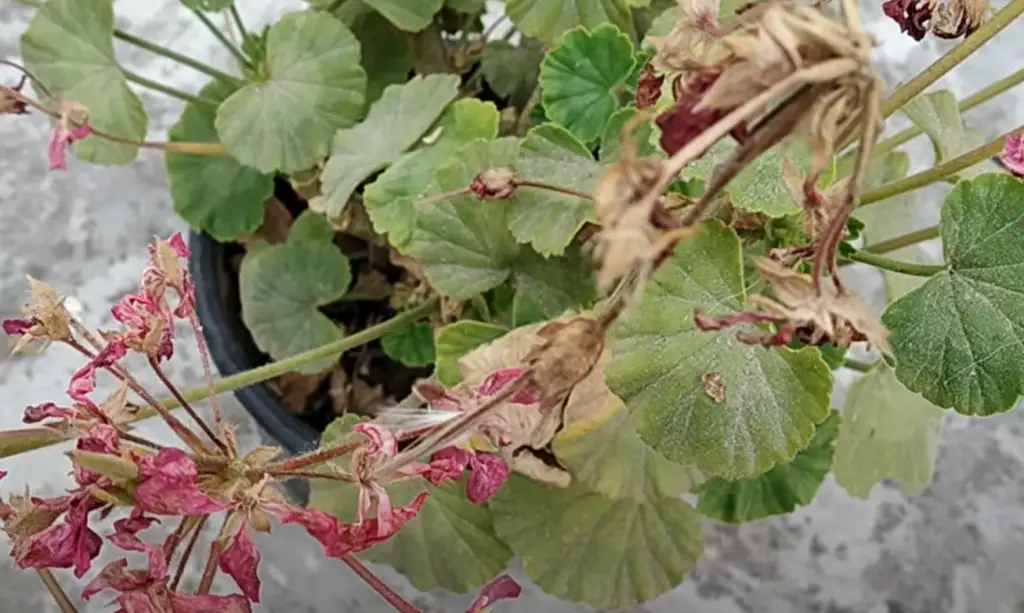
This will allow the plant to focus its energy on recuperating instead of fighting off root rot and other moisture related illnesses. The best way to determine if your geranium needs more water or less is to check the soil for dryness before you water. If the top few inches of soil are still damp, then there’s no need to add more water. Once the leaves have been removed and watering adjusted accordingly, make sure you fertilize your geranium regularly with a balanced fertilizer such as 10-10-10. This will help give the plant the energy it needs to recover and grow healthy new foliage. With a bit of extra care, your geranium should be back in top shape in no time!
What do overwatered geraniums look like?
Geraniums that have been overwatered will often exhibit discoloration and wilting of their leaves. The leaves may turn yellow, brown, or even black, depending on the severity of the overwatering. In some cases, the stems may become soft and mushy and won’t be able to support the weight of the plant. You might also notice specs of white powdery mold growing on the surface of your geranium’s leaves. All these symptoms are indicative of an overwatered geranium plant. If you’re unsure about whether or not you’ve been over-watering your geraniums, there are a few other signs you can look for:
- The soil remains waterlogged after watering, or will not absorb water at all.
- The roots of the plant are rotting and can easily break apart when touched.
- The leaves become wilted, discolored, or even fall off for no apparent reason.
Should I remove yellow leaves from geraniums?
Yes, yellow leaves on geraniums should be removed. Yellowing leaves can generally be caused by a lack of nutrients or water, pests, diseases, and environmental conditions. Removing these leaves will help encourage new growth and prevent the spread of any potential issues. You should also examine the plant closely to try to diagnose the cause of yellowing and take steps to remedy it (e.g., adjusting soil moisture levels or applying fertilizer). Good cultural practices like providing adequate light and air circulation can also help prevent future problems with yellow leaves. Ultimately, removing the yellowed leaves will help promote healthy growth in your geraniums!
Do geraniums like full sun?
Yes, geraniums usually prefer bright, direct sunlight for 4-6 hours every day. This will help them stay healthy and promote flowering. However, they can tolerate some light shade in hotter climates. As long as they get the right amount of light, your geraniums should thrive!
Useful Video:Leaves Turning Yellow? What to Do
Conclusion
Geranium leaves turning yellow can be caused by a variety of issues such as lack of nutrients, over-watering, or too much sunlight. If you can identify the cause and adjust your care routine accordingly, you can help prevent this from happening in the future. It’s important to regularly inspect your geraniums for signs of yellowing leaves and address any problems quickly so that they don’t spread to other parts of the plant. With the proper care and attention, you can keep your geranium healthy and beautiful!
References:
- https://www.thespruce.com/why-geranium-leaves-turn-yellow-6892045
- https://www.gardeningetc.com/advice/why-are-my-geranium-leaves-turning-yellow
- https://www.gardenerbasics.com/blog/geranium-leaves-turning-yellow
- https://www.gardeningknowhow.com/ornamental/flowers/geranium/geranium-yellow-leaves.htm
- https://thegardeningfix.com/geranium-leaves-turning-yellow/







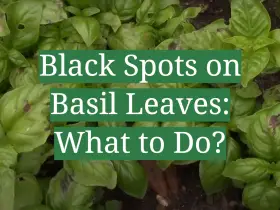


Leave a Reply
View Comments